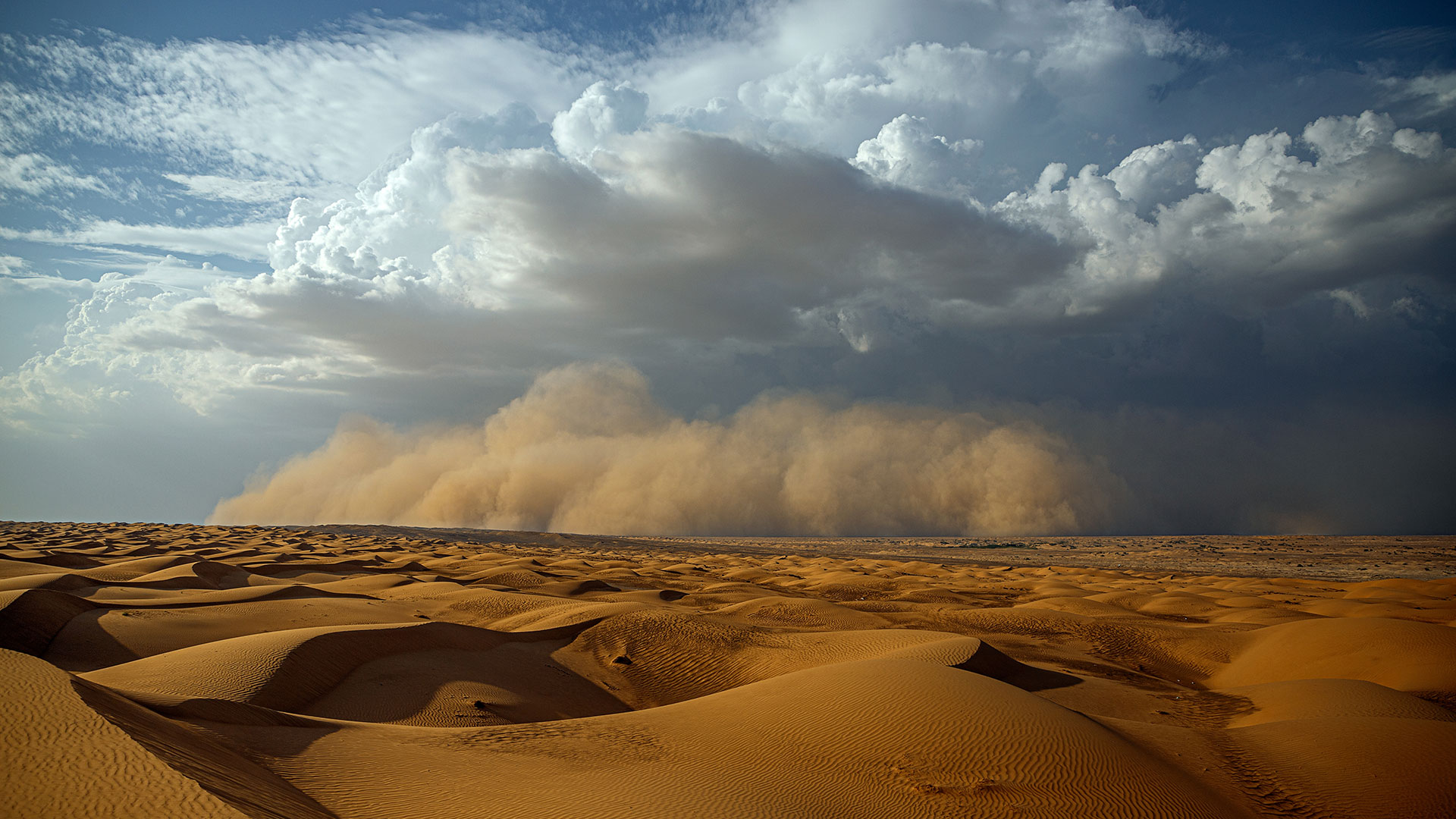


 1:51:16
1:51:16  2023-05-22
2023-05-22  1435
1435

The Sahara is the largest hot desert in the world and the third-largest desert overall, behind the cold deserts of Antarctica and the Arctic. The Sahara is one of the harshest environments on Earth, covering 3.6 million square miles (9.4 million square kilometers), an area about the size of the United States (including Alaska and Hawaii) and spanning nearly a third of the African continent. The name of the desert comes from the Arabic word ṣaḥrāʾ, which means "desert,"
The Sahara is bordered by the Atlantic Ocean to the west, the Red Sea to the east, the Mediterranean Sea to the north and the Sahel savanna to the south. The enormous desert spans 10 countries (Algeria, Chad, Egypt, Libya, Mali, Mauritania, Morocco, Niger, Sudan and Tunisia) as well as the territory of Western Sahara, a former Spanish colony that was annexed by Morocco in 1975, though control of the region is disputed by the Indigenous Saharawi people, the BBC reported in 2021.
The Sahara desert has a variety of land features, but it is most famous for the sand dune fields that are often depicted in movies. The dunes can reach almost 600 feet (183 meters) high, and they cover about 25% of the entire desert, according to the Encyclopedia Britannica. Other topographical features include mountains, plateaus, sand- and gravel-covered plains, salt flats, basins and depressions. Emi Koussi, an extinct volcano in Chad, is the highest point in the Sahara, reaching 11,204 feet (3,415 m) above sea level, and the Qattara Depression in northwestern Egypt is the Sahara's deepest point, at 436 feet (133 m) below sea level.
Although water is scarce across the entire region, the Sahara contains two permanent rivers (the Nile and the Niger), as well as at least 20 seasonal lakes and huge aquifers, which are the primary sources of water for more than 90 major oases in the desert. Water management authorities once thought that the aquifers in the Sahara were "fossil aquifers" — water reserves that accumulated under different climate and geological conditions in the distant past — and feared that these resources would soon dry up due to overuse. However, a study published in the journal Geophysical Research Letters in 2013 discovered that the aquifers were still being fed via rain and runoff.
Despite the harsh, arid conditions of the Sahara, many plant and animal species call the region home. Approximately 500 plant species, 70 mammalian species, 90 avian species, 100 reptilian species and numerous species of spiders, scorpions and other small arthropods live in the Sahara, according to the World Wildlife Fund.
Camels, also known as the "ships of the desert," are well adapted to the Sahara's hot, arid environment, according to the San Diego Zoo. The humps on a camel's back store fat, which can be used for energy and hydration in between meals. Camels store energy so efficiently that they can go more than a week without water and several months without food.
Other mammal residents of the Sahara include gazelles, addaxes (a type of antelope), cheetahs, caracals, desert foxes and wild dogs. Many reptiles also thrive in the desert environment, including several species of snakes, lizards, and even crocodiles in places where there is enough water. Several arthropod species also call the Sahara home, such as dung beetles, scarab beetles, scorpions and many types of ants, according to the Sahara Conservation Fund.
Plant species in the Sahara have adapted to the arid conditions, with roots that reach deep underground to find buried water sources and leaves that are shaped into spines that minimize moisture loss, according to the BBC. The most arid parts of the desert are completely devoid of plant life, but oasis areas, such as the Nile Valley, support a large variety of plants, including olive trees, date palms and various shrubs and grasses.
Today, the Sahara has a dry, inhospitable desert climate. However, it alternates between harsh desert and another extreme — a lush, green oasis — every 20,000 years, according to a study published in 2019 in the journal Science Advances. The study's authors examined marine sediments containing dust deposits from the Sahara from the past 240,000 years. They found that the cycle between a dry and a green Sahara corresponded to the slight changes in the tilt of Earth's axis, which also drives monsoon activity. When Earth's axis tilted the Northern Hemisphere just a single degree closer to the sun (about 24.5 degrees instead of today's 23.5 degrees), it received more sunlight, which increased the monsoon rains and, therefore, supported a lush, green landscape in the Sahara.
Archaeologists have discovered prehistoric cave and rock paintings and other archaeological remains that shed light on what life was like in the once-green Sahara. Bits of pottery suggest that about 7,000 years ago, herders raised livestock and harvested plants in what now is an arid desert.
But for the past 2,000 years or so, the climate of the Sahara has been fairly stable — and dry. The northeastern winds strip moisture from the air over the desert and drive hot winds toward the equator. These winds can reach exceptional speeds and cause severe dust storms that can drop local visibility to zero. Dust from the Sahara travels on trade winds all the way to the opposite side of the globe.
Reality Of Islam |
|

Astronomers

Cosmologist

Scientists
 9:3:43
9:3:43
 2018-11-05
2018-11-05
10 benefits of Marriage in Islam
 7:5:22
7:5:22
 2019-04-08
2019-04-08
benefits of reciting surat yunus, hud &
 9:45:7
9:45:7
 2018-12-24
2018-12-24
advantages & disadvantages of divorce
 11:35:12
11:35:12
 2018-06-10
2018-06-10
 6:0:51
6:0:51
 2018-10-16
2018-10-16
 3:18:29
3:18:29
 2022-12-24
2022-12-24
 11:11:59
11:11:59
 2023-02-01
2023-02-01
a hero waters thirsty wild animals
 9:4:9
9:4:9
 2022-01-06
2022-01-06
allah will not answer all your prayers
 6:56:28
6:56:28
 2022-01-01
2022-01-01
 8:4:21
8:4:21
 2022-01-08
2022-01-08
 8:15:37
8:15:37
 2023-02-16
2023-02-16
al-hussain (peace be upon him)
 10:18:1
10:18:1
 2022-09-21
2022-09-21
 5:41:46
5:41:46
 2023-03-18
2023-03-18
| LATEST |